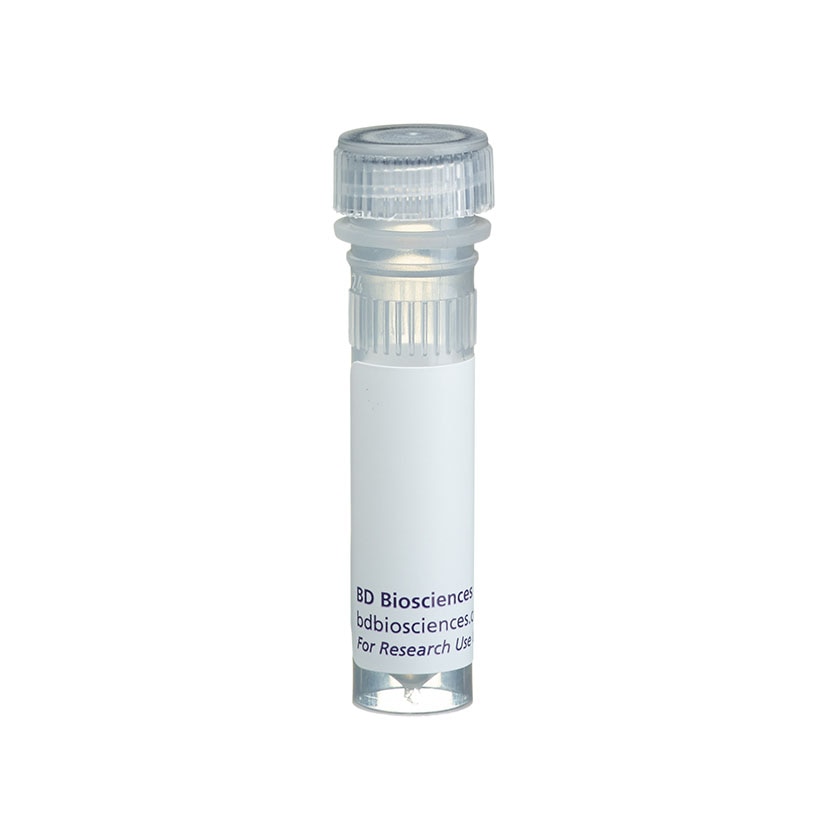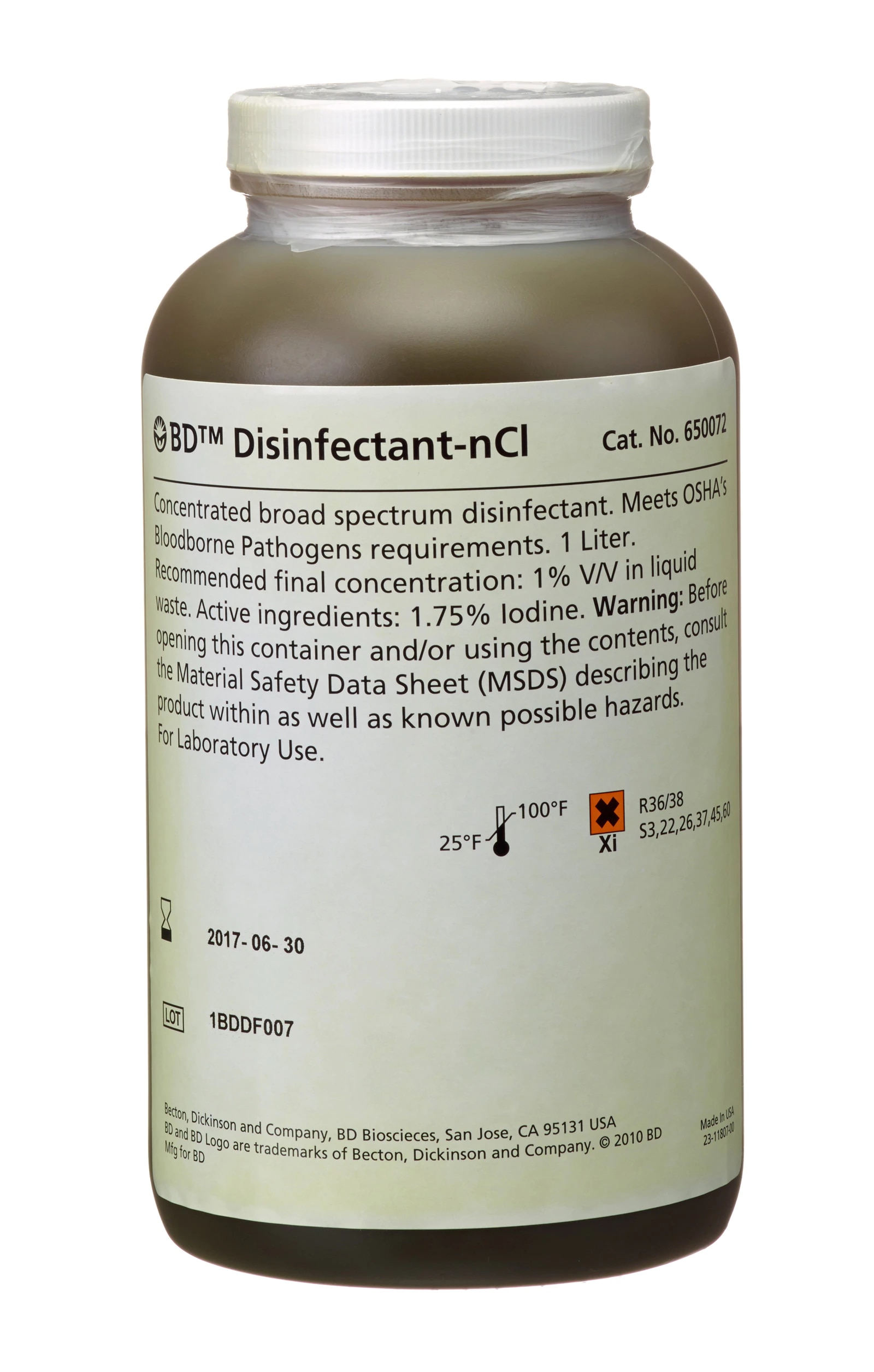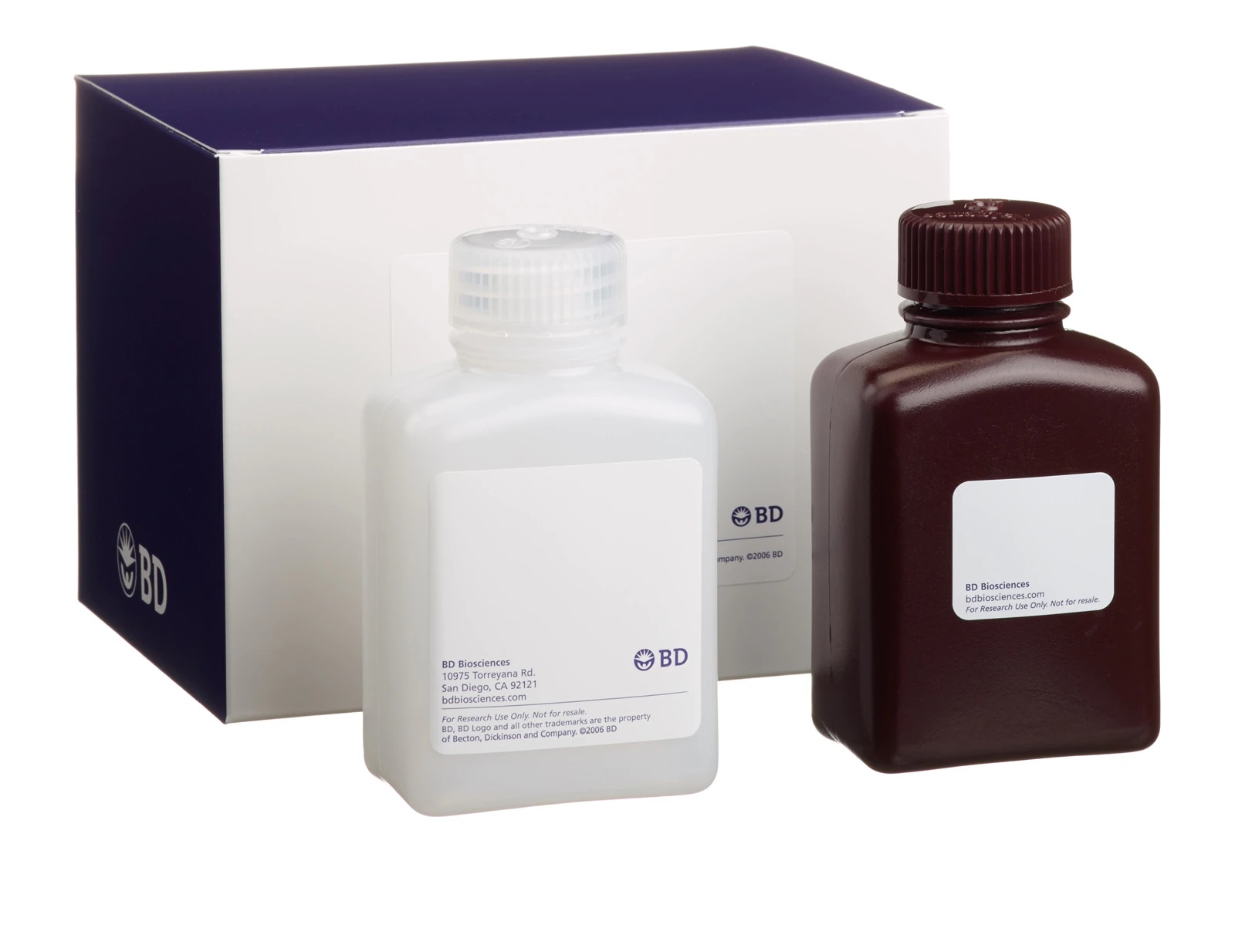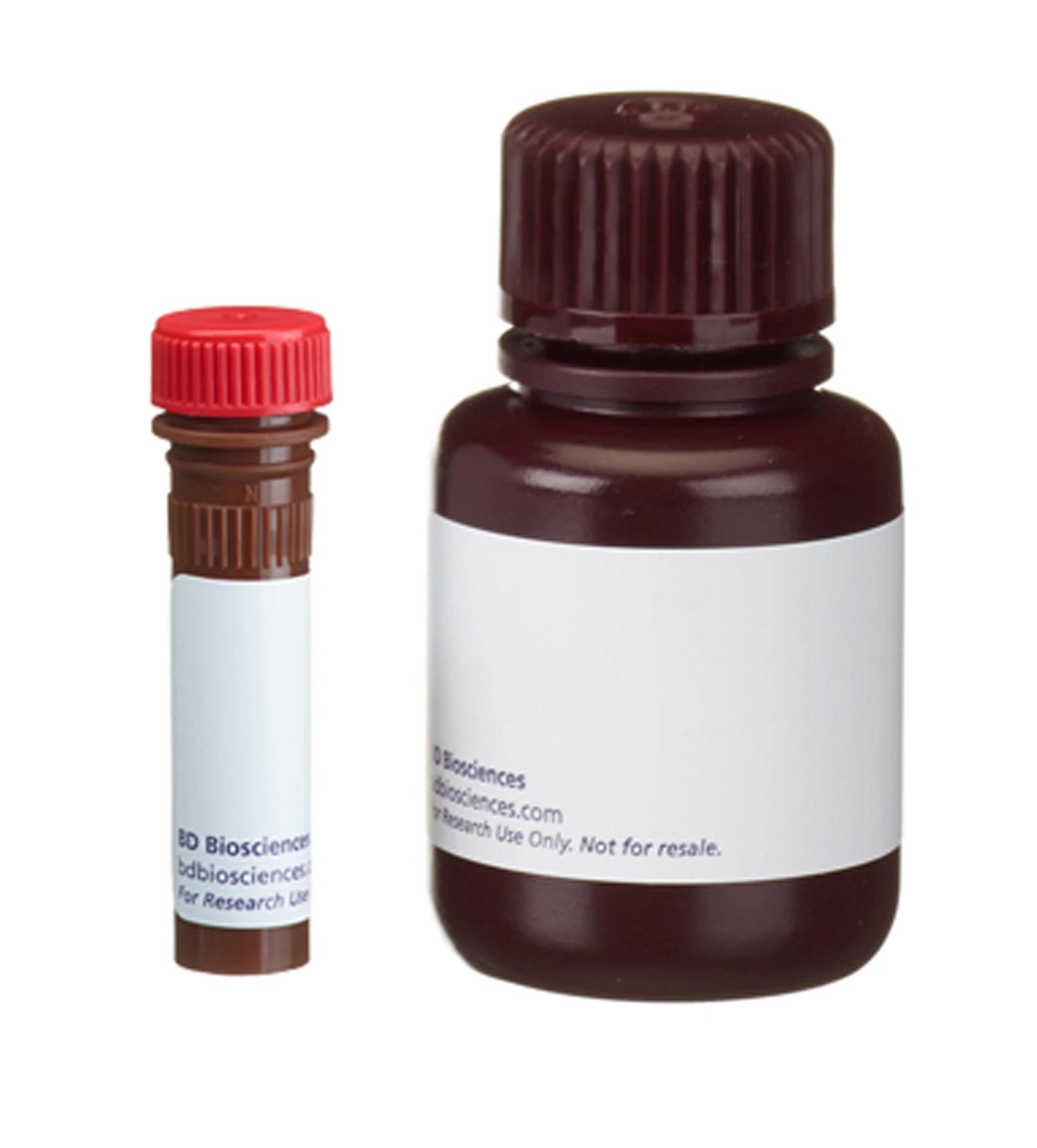-
Your selected country is
Middle East / Africa
- Change country/language
-
Reagents
- Flow Cytometry Reagents
-
Western Blotting and Molecular Reagents
- Immunoassay Reagents
-
Single-Cell Multiomics Reagents
- BD® OMICS-Guard Sample Preservation Buffer
- BD® AbSeq Assay
- BD® Single-Cell Multiplexing Kit
- BD Rhapsody™ ATAC-Seq Assays
- BD Rhapsody™ Whole Transcriptome Analysis (WTA) Amplification Kit
- BD Rhapsody™ TCR/BCR Next Multiomic Assays
- BD Rhapsody™ Targeted mRNA Kits
- BD Rhapsody™ Accessory Kits
- BD® OMICS-One Protein Panels
-
Functional Assays
-
Microscopy and Imaging Reagents
-
Cell Preparation and Separation Reagents
-
- BD® OMICS-Guard Sample Preservation Buffer
- BD® AbSeq Assay
- BD® Single-Cell Multiplexing Kit
- BD Rhapsody™ ATAC-Seq Assays
- BD Rhapsody™ Whole Transcriptome Analysis (WTA) Amplification Kit
- BD Rhapsody™ TCR/BCR Next Multiomic Assays
- BD Rhapsody™ Targeted mRNA Kits
- BD Rhapsody™ Accessory Kits
- BD® OMICS-One Protein Panels
- Middle East / Africa (English)
-
Change country/language
Old Browser
This page has been recently translated and is available in French now.
Looks like you're visiting us from United States.
Would you like to stay on the current country site or be switched to your country?
BD Transduction Laboratories™ Purified Mouse Anti-Oct3/4
Clone 40/Oct-3 (RUO)

Top Row: Western Blot analysis of Oct3/4 in human and mouse ES cell lines. Lysates from H9 human ES cells* (WiCell, Madison, WI, left blot) and ES-E14TG2a mouse ES cells (ATCC CRL-1821, right blot) and were probed with Purified Mouse anti-Oct3/4 monoclonal antibody at titrations of 2.0 (lanes 1), 1.0 (lanes 2), and 0.5 µg/ml (lanes 3). Oct3/4 is identified as a band of 46 kDa in the human and mouse ES cells.
*The H9 cells were cultured on a mitomycin C-treated mouse embryonic fibroblast feeder layer [MEF (CF-1), ATCC SCRC-1040] that maintains the undifferentiated state of the ES cells. The lysate was made from a mixture of the 2 cell types, the majority of which were H9 cells.
Bottom Row: Immunofluorescent staining of human and mouse ES cell lines. The H9 cell line (left panel) and ES-E14TG2a cells (right panel) were cultured, fixed, permeabilized, and stained with Purified Oct3/4 monoclonal antibody (pseudo-colored green) according to the Recommended Assay Procedure. The second-step reagent was Alexa Fluor® 555 goat anti-mouse Ig (Invitrogen) and counter-staining was with Hoechst 33342 (pseudo-colored blue). The images were captured on a BD Pathway™ 435 Cell Analyzer using a 10X objective (H9) or 20X objective (E14) and merged using BD Attovision™ software. Permeabilization using BD Perm/Wash(TM) was used with this antibody; Triton™ X-100 or cold methanol will also work. Please refer to http://www.bdbiosciences.com/pharmingen/protocols/Bioimaging_Certified.shtml for alternate permeabilization protocols.








Top Row: Western Blot analysis of Oct3/4 in human and mouse ES cell lines. Lysates from H9 human ES cells* (WiCell, Madison, WI, left blot) and ES-E14TG2a mouse ES cells (ATCC CRL-1821, right blot) and were probed with Purified Mouse anti-Oct3/4 monoclonal antibody at titrations of 2.0 (lanes 1), 1.0 (lanes 2), and 0.5 µg/ml (lanes 3). Oct3/4 is identified as a band of 46 kDa in the human and mouse ES cells.
*The H9 cells were cultured on a mitomycin C-treated mouse embryonic fibroblast feeder layer [MEF (CF-1), ATCC SCRC-1040] that maintains the undifferentiated state of the ES cells. The lysate was made from a mixture of the 2 cell types, the majority of which were H9 cells.
Bottom Row: Immunofluorescent staining of human and mouse ES cell lines. The H9 cell line (left panel) and ES-E14TG2a cells (right panel) were cultured, fixed, permeabilized, and stained with Purified Oct3/4 monoclonal antibody (pseudo-colored green) according to the Recommended Assay Procedure. The second-step reagent was Alexa Fluor® 555 goat anti-mouse Ig (Invitrogen) and counter-staining was with Hoechst 33342 (pseudo-colored blue). The images were captured on a BD Pathway™ 435 Cell Analyzer using a 10X objective (H9) or 20X objective (E14) and merged using BD Attovision™ software. Permeabilization using BD Perm/Wash(TM) was used with this antibody; Triton™ X-100 or cold methanol will also work. Please refer to http://www.bdbiosciences.com/pharmingen/protocols/Bioimaging_Certified.shtml for alternate permeabilization protocols.

Top Row: Western Blot analysis of Oct3/4 in human and mouse ES cell lines. Lysates from H9 human ES cells* (WiCell, Madison, WI, left blot) and ES-E14TG2a mouse ES cells (ATCC CRL-1821, right blot) and were probed with Purified Mouse anti-Oct3/4 monoclonal antibody at titrations of 2.0 (lanes 1), 1.0 (lanes 2), and 0.5 µg/ml (lanes 3). Oct3/4 is identified as a band of 46 kDa in the human and mouse ES cells.
*The H9 cells were cultured on a mitomycin C-treated mouse embryonic fibroblast feeder layer [MEF (CF-1), ATCC SCRC-1040] that maintains the undifferentiated state of the ES cells. The lysate was made from a mixture of the 2 cell types, the majority of which were H9 cells.
Bottom Row: Immunofluorescent staining of human and mouse ES cell lines. The H9 cell line (left panel) and ES-E14TG2a cells (right panel) were cultured, fixed, permeabilized, and stained with Purified Oct3/4 monoclonal antibody (pseudo-colored green) according to the Recommended Assay Procedure. The second-step reagent was Alexa Fluor® 555 goat anti-mouse Ig (Invitrogen) and counter-staining was with Hoechst 33342 (pseudo-colored blue). The images were captured on a BD Pathway™ 435 Cell Analyzer using a 10X objective (H9) or 20X objective (E14) and merged using BD Attovision™ software. Permeabilization using BD Perm/Wash(TM) was used with this antibody; Triton™ X-100 or cold methanol will also work. Please refer to http://www.bdbiosciences.com/pharmingen/protocols/Bioimaging_Certified.shtml for alternate permeabilization protocols.








ImageTitle~BD Transduction Laboratories™ Purified Mouse Anti-Oct3/4


ImageTitle~BD Transduction Laboratories™ Purified Mouse Anti-Oct3/4





Regulatory Status Legend
Any use of products other than the permitted use without the express written authorization of Becton, Dickinson and Company is strictly prohibited.
Preparation And Storage
Recommended Assay Procedures
Bioimaging
1. Seed the cells in appropriate culture medium at an appropriate cell density in a BD Falcon™ 96-well Imaging Plate (Cat. No. 353219), and
culture overnight to 48 hours.
2. Remove the culture medium from the wells, wash the wells twice with 100 µl of 1x PBS, and fix the cells by adding 100 µl of fresh 3.7% Formaldehyde in PBS or BD Cytofix™ fixation buffer (Cat. No. 554655) to each well and incubating for 10 minutes at room temperature (RT).
3. Remove the fixative from the wells, and wash the wells twice with 100 µl of 1x PBS.
4. Permeabilize the cells by adding 100 µl of 1× BD Perm/Wash™ buffer (Cat. No. 554723) to each well and incubating for 30 minutes at RT.
5. Remove the permeabilizer, and wash the wells twice with 100 µl of 1x PBS.
6. Dilute the antibody in BD Perm/Wash™ buffer, and stain the cells by adding 50 µl of the diluted antibody to each well and incubating for 1 hour at RT.
7. Remove the diluted antibody, and wash the wells three times with 100 µl of 1x PBS.
8. Remove the PBS, dilute the second-step reagent in BD Perm/Wash™ buffer, and stain the cells by adding 50 µl of the diluted second-step reagent to each well and incubating for 1 hour at RT.
9. Remove the diluted second-step reagent, and wash the wells twice with 100 µl of 1x PBS.
10. Remove the PBS, and counter-stain the nuclei by adding 100 µl of a 2 µg/ml solution of Hoechst 33342 (eg, Sigma-Aldrich Cat. No. B2261) in 1x PBS to each well at least 15 minutes before imaging.
11. View and analyze the cells on an appropriate imaging instrument.
Product Notices
- Since applications vary, each investigator should titrate the reagent to obtain optimal results.
- Source of all serum proteins is from USDA inspected abattoirs located in the United States.
- Caution: Sodium azide yields highly toxic hydrazoic acid under acidic conditions. Dilute azide compounds in running water before discarding to avoid accumulation of potentially explosive deposits in plumbing.
- Please refer to www.bdbiosciences.com/us/s/resources for technical protocols.
Development of a multicellular organism from a single fertilized cell is regulated by the coordinated activity of DNA transcription factors. Oct3/4, a member of the POU family of transcription factors, functions in pluripotent cells of early embryonic stem cell (ES) lines and embryonal carcinomas (EC). Other members of the POU family include Oct1, Oct2, Pit-1, and unc-86. The POU domain, a 150-amino acid region that determines binding specificity, is conserved among these proteins and consists of 3 subdomains: POU-specific A and B subdomains and a homeobox-like subdomain. Oct3/4 is expressed in undifferentiated cells, but is lost as cells are induced to differentiate. Oct3/4 is not expressed in adult tissues. The interaction of Oct3/4 with SOX2, another embryonic transcription factor, produces an active complex that regulates expression of genes such as Nanog, UTF1, and FGF4. Although Oct3/4 is specifically phosphorylated on serine residues, this modification is not required for DNA binding, but may affect its transactivation potential. Thus, Oct3/4 is a transcription factor that plays an important role in determining early steps of embryogenesis and differentiation.
Development References (6)
-
Nishimoto M, Fukushima A, Okuda A, Muramatsu M. The gene for the embryonic stem cell coactivator UTF1 carries a regulatory element which selectively interacts with a complex composed of Oct-3/4 and Sox-2. Mol Cell Biol. 1999; 19(8):5453-5465. (Biology). View Reference
-
Okamoto K, Okazawa H, Okuda A, Sakai M, Muramatsu M, Hamada H. A novel octamer binding transcription factor is differentially expressed in mouse embryonic cells. Cell. 1990; 60(3):461-472. (Biology). View Reference
-
Pan G, Thomson JA. Nanog and transcriptional networks in embryonic stem cell pluripotency. Cell Res. 2007; 17:42-49. (Biology). View Reference
-
Rosfjord E, Scholtz B, Lewis R, Rizzino A. Phosphorylation and DNA binding of the octamer binding transcription factor Oct-3. Biochem Biophys Res Commun. 1995; 212(3):847-853. (Biology). View Reference
-
Vigano MA, Staudt LM. Transcriptional activation by Oct-3: evidence for a specific role of the POU-specific domain in mediating functional interaction with Oct-1. Nucleic Acids Res. 1996; 24(11):2112-2118. (Biology). View Reference
-
Yuan H, Corbi N, Basilico C, Dailey L. Developmental-specific activity of the FGF-4 enhancer requires the synergistic action of Sox2 and Oct-3. Genes Dev. 1995; 9(21):2635-2645. (Biology). View Reference
Please refer to Support Documents for Quality Certificates
Global - Refer to manufacturer's instructions for use and related User Manuals and Technical data sheets before using this products as described
Comparisons, where applicable, are made against older BD Technology, manual methods or are general performance claims. Comparisons are not made against non-BD technologies, unless otherwise noted.
For Research Use Only. Not for use in diagnostic or therapeutic procedures.